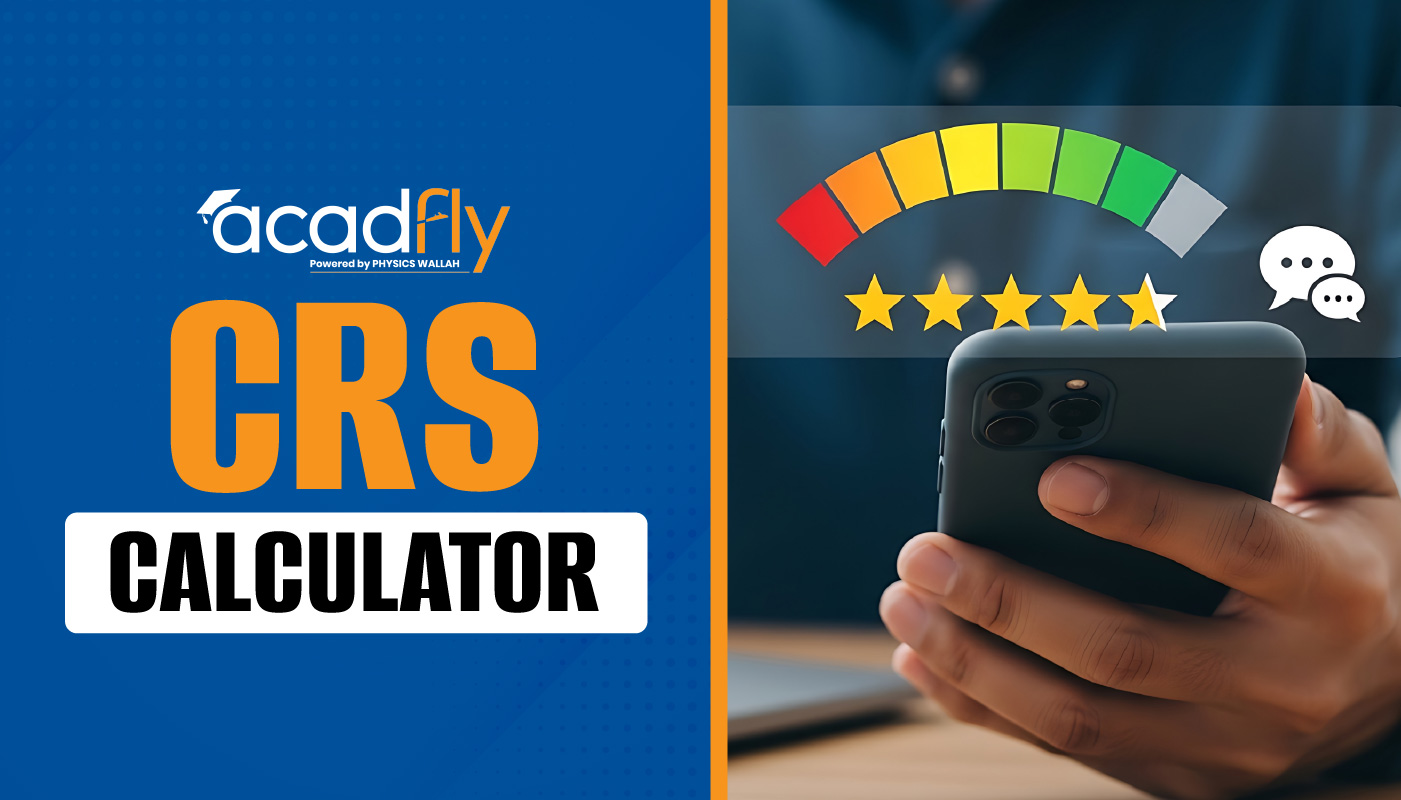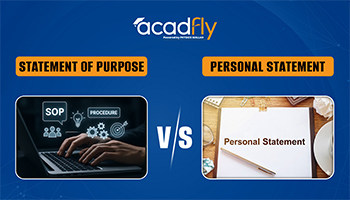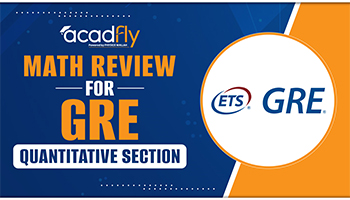Understanding the GMAT Exam Pattern and syllabus is essential before beginning to prepare for it. According to the most recent revision of the GMAT Focus Edition, the 64 questions in the GMAT Exam Pattern are divided into three sections: Numerical Reasoning, Verbal Reasoning, and Data Insights.
The Focus Edition GMAT exam format emphasises evaluating the candidate's critical thinking, problem-solving, and data analysis abilities, all of which are crucial for enrolling in a graduate business college abroad. We will cover all aspects of the GMAT exam format in this post, including the new GMAT question structure and what candidates should expect from the updated test.
About the GMAT Exam
Every choice you make during your MBA journey has the potential to make or break your chances of being accepted into a prestigious business school, and the GMAT is one of the most important ones.
A redesigned and simplified version of the GMAT, the Focus Edition is intended to better represent the skills needed for modern business education and career success. To properly prepare for the GMAT, it is crucial to understand its format. For faster study, the GMAT Focus Edition exam format is shown in the following table.
|
GMAT Focus Edition Exam Pattern |
|
|---|---|
|
Feature |
Details |
|
Mode of Exam |
Online (Exam center-based and remote-based) |
|
Total Duration of the Exam |
2 hours and 15 minutes |
|
Total Number of Questions |
64 |
|
Types of Questions |
MCQs and Non-MCQs |
|
Score Range |
205-805 |
|
Median Score |
546 |
|
Exam Sections |
Three, no section-wise restriction |
|
Verbal Reasoning |
23 questions (to be attempted in 45 minutes) |
|
Quantitative Reasoning |
21 questions (to be attempted in 45 minutes) |
|
Data Insight |
20 questions (to be attempted in 45 minutes) |
|
Marking Scheme |
Computer-based adaptive scheme |
|
No negative marking |
|
|
Frequency of Exam |
Multiple times a year |
|
Date of Exam |
Multiple times a year |
|
Result of Exam |
5-20 days after the exam |
GMAT Exam Pattern 2025
GMAC introduced the GMAT Focus Edition, and the GMAT exam pattern has changed since earlier rounds. The current GMAT Focus Edition exam pattern includes new changes. The GMAT 11th Edition syllabus and format change from the previous edition of the GMAT exam.
The GMAT is a computer-adaptive test divided into four sections that include both subjective and objective questions. There are 64 questions to answer in 2 hours and 15 minutes. Each part is timed separately and contains a varied number of questions.
GMAT Exam Pattern: Quantitative Reasoning Section
It evaluates applicants' abilities to examine facts and draw conclusions based on reasoning skills. Here's how the Quant section of the GMAT is assessed:
-
Applicants will be examined on their ability to solve problems using algebraic and mathematical principles.
-
Applicants benefit from the GMAT Focus Edition since the Quant section includes an on-screen calculator. As a result, they will not have to carry an additional one.
-
Geometry problems have been removed from the GMAT Exam Pattern for the Focus Edition.
GMAT Exam Pattern: Verbal Reasoning Section
This section evaluates applicants' understanding of reading comprehension and critical thinking in standard English.
-
The evaluation measures an applicant's comprehension skills and ability to conclude written materials. It does this using two types of multiple-choice questions.
-
The first type involves reading passages of up to 350 words, followed by answering specific questions. These questions assess your ability to comprehend the provided text, make conclusions from it, and establish logical connections between various portions of the content.
-
The second type, Critical Reasoning questions, tests your ability to conclude brief argumentation texts.
-
As a result, the GMAT exam format for Verbal Reasoning in the Focus Edition is comparable to the previous one. The section consists of 23 questions that must be answered within 45 minutes.
GMAT Exam Pattern: Data Insights
Data Insights is an updated section of the GMAT test that evaluates applicants' ability to analyse data. Here is the GMAT test pattern for Data Insights on the Focus Edition:
-
The GMAT Focus will measure the applicant's ability to read and analyse data in different formats, including tables and graphs.
-
The GMAT exam format for this portion is intended to represent how today's corporate world operates using data. How organisations and managers collect data from many sources to detect trends, make choices, and solve minor and major business problems.
-
As a result, the candidate will be examined on 20 questions over 45 minutes in this new section.
GMAT Exam Pattern Key Features
Although the GMAT is regarded as a difficult test, it provides candidates with a great deal of freedom in terms of some elements. They are:
Format of Exam
GMAT is computer-adaptive, which means the exam's difficulty level changes to match your ability. This allows for an accurate evaluation of your talents based on your strengths and capabilities.
However, only the Quantitative and Verbal Reasoning sections adhere to this pattern. So, if you properly answered a verbal or quantitative question, the following question will be more challenging, and if you replied incorrectly, the next question will be simpler.
Order of Sections
The GMAT allows you to choose the sequence of parts immediately before the exam begins. You will be provided with three alternatives and given one minute to decide, after which the first option will be picked by default. The three options are as follows:
-
Analytical Writing Assessment, Integrated Reasoning, Quantitative, Verbal
-
Verbal, Quantitative, Integrated Reasoning, Analytical Writing Assessment
-
Quantitative, Verbal, Integrated Reasoning, Analytical Writing Assessment
Negative Marking
In contrast to most other management admission exams, the GMAT exam format includes no penalty for wrong answers. Nonetheless, difficult questions are more important than easy ones.
Scores and Cut-Offs
GMAT scores range from 200 to 800, with the majority of top business colleges setting their cut-offs at 700 or higher. For example, foreign business schools such as Stanford, Harvard, and Wharton have GMAT cut-offs of about 720-740.
The same is true for Indian B-schools such as ISB and XLRI. Please keep in mind that your Integrated Reasoning and Analytical Writing Assessment results do not contribute towards your overall GMAT score. The scores from these parts may be assessed independently by various business schools.
How Computer-Adaptive Testing Works in GMAT?
The GMAT pattern includes computer-adaptive testing, which varies the difficulty of questions based on your performance. In the computer-adaptive method, the GMAT is evaluated as follows:
-
If you properly answer the first question on the new GMAT format, the algorithm analyses your ability and encourages you with a little tougher question.
-
The algorithm prompts you with the following question, for which you have a 50/50 chance of answering.
-
The next set of questions in the GMAT exam pattern is of intermediate complexity, which allows the system to gather as much information about the candidate's degree of preparation as possible.
-
Each question on the GMAT new pattern may appear to be difficult since it is created in a psychometric method to measure your analytical abilities. So don't freak out if you get an extraordinarily simple question after answering an exceedingly difficult one.
-
With each successfully answered question in the new GMAT format, the total score computation becomes more accurate.
-
The GMAT paper design includes all necessary questions. If you still have time after answering all questions, you can alter up to three answers in each GMAT section.
Get ready to Study Abroad
AcadFly, a complete global education solution, may help you fulfill your ambition of studying abroad. AcadFly was used to enroll or get accepted to one of the top 35 US and UK colleges. AcadFly is a comprehensive one-stop solution for all the procedures you need to do to research, shortlist, and begin your international trip, and more.
Frequently Asked Questions
What is the new GMAT pattern?
What is a good GMAT score?
Which GMAT exam paper pattern would be considered for MBA programs now?
Is the new GMAT pattern easier?
How rare is an 800 GMAT score?









